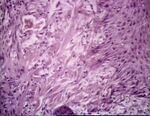Difference between revisions of "Category:Chronic Inflammation"
Jump to navigation
Jump to search
(Created page with " ==Types== ===Granulomatous Inflammation=== * Granulomatous inflammation is usually caused by organisms of low virulence but great persistence, or by implanted foreign bodies....") |
|||
| Line 1: | Line 1: | ||
| − | |||
==Types== | ==Types== | ||
| − | ===Granulomatous Inflammation | + | ===[[Granulomatous Inflammation]]=== |
| − | |||
| − | |||
| − | |||
| − | |||
| − | |||
| − | |||
| − | |||
| − | |||
| − | |||
| − | |||
| − | |||
| − | |||
| − | |||
| − | |||
| − | |||
| − | |||
| − | |||
| − | |||
| − | |||
| − | |||
| − | |||
| − | |||
| − | |||
| − | |||
| − | |||
| − | |||
| − | |||
| − | |||
| − | |||
| − | |||
| − | |||
| − | === | ||
| − | |||
| − | |||
| − | |||
| − | |||
| − | |||
| − | |||
| − | |||
| − | |||
| − | |||
| − | |||
| − | |||
| − | |||
| − | |||
| − | |||
| − | |||
| − | |||
| − | |||
| − | |||
| − | |||
| − | |||
| − | |||
| − | |||
| − | |||
| − | |||
| − | |||
| − | |||
| − | |||
| − | |||
| − | |||
===Granulation Tissue=== | ===Granulation Tissue=== | ||
| Line 76: | Line 14: | ||
* Ulcers and open wounds may heal by granulation. | * Ulcers and open wounds may heal by granulation. | ||
| + | [[Category:Chronic Inflammation]][[Category:To Do - Blood]] | ||
===Lymphocytic Inflammation=== | ===Lymphocytic Inflammation=== | ||
| Line 93: | Line 32: | ||
*#** Ee.g. [[:Category:Mycoplasmas|Mycoplasmosis]] in swine and calves. | *#** Ee.g. [[:Category:Mycoplasmas|Mycoplasmosis]] in swine and calves. | ||
| + | [[Category:Chronic Inflammation]][[Category:To Do - Blood]] | ||
[[Category:Inflammation]] | [[Category:Inflammation]] | ||
Revision as of 11:28, 4 August 2010
Types
Granulomatous Inflammation
Granulation Tissue
- Is completlely different to granulomatous inflammation, despite the similarity in name!
- Occurs on the surface of the skin where large areas of the epithelium have been lost.
- Makes up the lining of sinus tracts discharging from deeper lesions.
- Takes its name from the gross appearance of the small vessels which appear at the surface.
- Look like red granules.
- These vessels supply inflammatory cells, mainly neutrophils, to the infected surface.
- The most frequent example in domestic animals is the formation of excessive granulation tissue on the legs of horses with poorly healing wounds.
- "Proud flesh"
- Ulcers and open wounds may heal by granulation.
Lymphocytic Inflammation
- Lymphocytic inflammation is a diffuse chronic ongoing inflammation.
- Seen in:
- Diseases of the central nervous system.
- Lymphocytes appear microscopically as several layers of cells around blood vessels in the perivascular space.
- They indicate that there is damage to the nervous tissue further in.
- Should alert to the possibility of viral infection, which is a common cause of central nervous system disease.
- E.g. louping ill.
- Should alert to the possibility of viral infection, which is a common cause of central nervous system disease.
- The gut.
- An excessive number of lymphocytes diffusely infiltrating the lamina propria, often in conjunction with plasma cells, indicate an ongoing non-specific chronic enteritis.
- The respiratory tract.
- Peribronchial and peribronchiolar cuffing may occur to the point of actual lymphoid follicle formation in these areas.
- Follicles are sometimes large enough to cause partial occlusion of the airways.
- A feature of some chronic lung diseases.
- Ee.g. Mycoplasmosis in swine and calves.
- Peribronchial and peribronchiolar cuffing may occur to the point of actual lymphoid follicle formation in these areas.
- Diseases of the central nervous system.
Pages in category "Chronic Inflammation"
The following 4 pages are in this category, out of 4 total.
